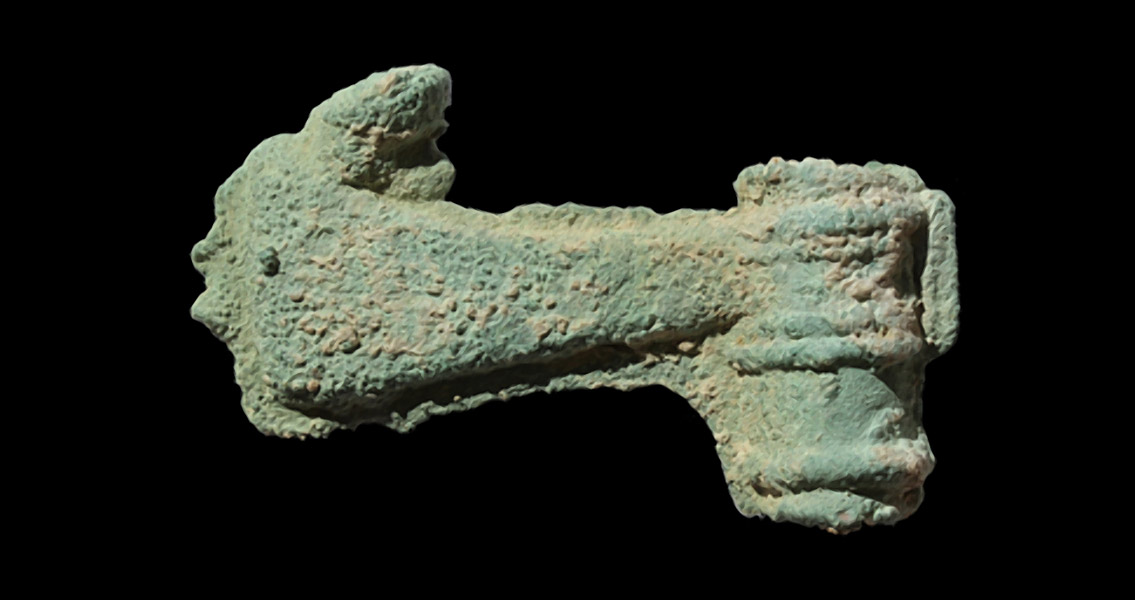<![CDATA[An amazing array of bronze weapons, never before found on the Arabian Peninsula, was discovered simply scattered across the ground in a building believed to have once been part of a religious site in central Oman. Dating back to the Iron Age II (900 BCE to 600 BCE) the objects, which appear to be non-functional, include quivers, bows, arrows, battle-axes, daggers and arrowheads. The discovery was made in one of two buildings (measuring 15 meters long and made from earthen bricks and sandstone blocks) which along with a few other facilities, make up the archaeological site known as Mudhmar East near Adam; in the Sultanate of Oman, during excavations being conducted by a French archaeological team. The site, discovered in 2009, is located on the slope of Jabal Mudhmar, at what was a strategic intersection of several different trade routes. Laying on the boundary between Oman's desert and oasis regions, the area around Adam was all but unexplored from an archaeological perspective until the French Archaeological Mission in central Oman completed its first expedition in 2007. The non-functional nature of most of the weapons (which looked as if they had fallen off furniture or shelves) could indicate they were designed as decorations or offerings to a war deity. This theory is supported by the second building on the site where objects indicative of ritual practices of the time, such as bronze snakes and shards of clay incense burners were found. It’s also possible they were used in association with a ceremony or social practice as yet unknown. Within the collection two exceptionally remarkable groups present themselves. The first group consists of two quivers, rather small at 35 cm, made entirely of bronze and including all six of the arrows each one contained. The quivers are small-scale models designed to imitate the original objects which tend to be made with leather and other perishable materials not usually found at archaeological sites. Having been made of metal, the objects were clearly not designed to be used. Quivers of this type have never been found in the Arabian Peninsula, as well as being particularly rare in other locations. The second group is comprised of metal weapons, also mostly nonfunctional given their reduced size and material. The group consists of five daggers (with crescent-shaped features typical of Iron Age II), five battle-axes, five bows and approximately fifty arrowheads. The bows were constructed using a flat and curved bow stave which had been bent at both ends and then connected with a string made from bronze. The bows are an average of 70 cm long. Objects of this nature have also never been found here before: metal bows were completely unknown in the Middle East, including the Arabian Peninsula. The discovery at Mudhmar East offers new information about the weaponry used during the Iron Age in the region and additionally about the social practices of the time. This assortment of weapons was made at a time when production of metals in the eastern Arabian Peninsula was increasing. This technical and economic development corresponded with a society of increasing complexity. Understanding this pre-literate society’s social and political structure continues to be a challenging task, the key of which will be the ongoing archaeological explorations of this site and others in Oman. Image courtesy of Guillaume Gernez / Mission archéologique française en Oman central.]]>
Iron Age Discovery First of Its Kind on Arabian Peninsula
